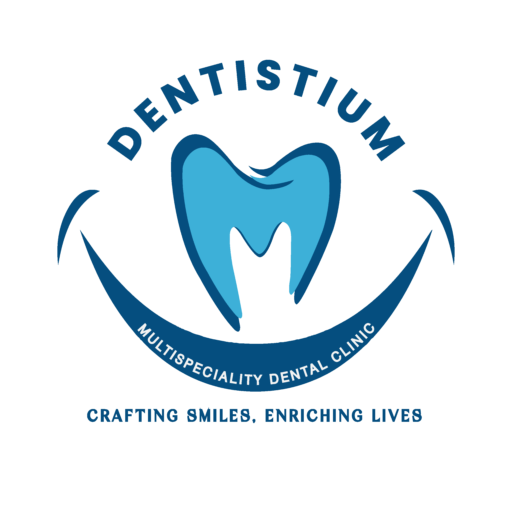Dental Implants – A good option for replacement of missing Tooth ?
Missing a tooth can affect more than just your smile—it can impact your ability to eat, speak, and even lead to jawbone loss over time. While there are several options for replacing missing teeth, dental implants have become the gold standard in modern dentistry. But are they the right choice for you?
Let’s take a closer look at what dental implants are, how they work, and why they’re often considered the best solution for tooth replacement.

What Are Dental Implants?
A dental implant is a titanium post surgically inserted into the jawbone to act as an artificial tooth root. Once the implant fuses with the bone (a process called osseointegration), it provides a stable foundation for a crown, bridge, or dentures.
Implants are designed to look, feel, and function like natural teeth—making them a popular choice for long-term tooth replacement.
Why Consider a Dental Implant?
Here’s why dental implants are a preferred choice for many patients:
Natural Look and Feel
Implants closely mimic the appearance and function of your natural teeth.
Long-Lasting Solution
With proper care, dental implants can last 15–25 years or even a lifetime.
Bone Preservation
Implants stimulate the jawbone, preventing bone loss that occurs when a tooth is missing.
No Impact on Nearby Teeth
Unlike bridges, implants don’t require grinding down adjacent teeth for support.
Improved Comfort and Confidence
Implants don’t shift like dentures, making it easier to eat, speak, and smile confidently.
Who Is a Good Candidate for Dental Implants?
Dental implants are suitable for many people, but ideal candidates should:
Have healthy gums
Have sufficient jawbone density
Be in good general health
Be non-smokers or willing to quit, as smoking can affect healing
Be committed to good oral hygiene and regular dental visits
If jawbone loss has already occurred, bone grafting may be needed before implant placement.
How Does the Procedure Work?
The implant process typically includes several steps over a few months:
Consultation & Imaging
The dentist evaluates your oral health and takes X-rays or 3D scans.Implant Placement
The implant is surgically placed into the jawbone under local anesthesia.Healing Period (Osseointegration)
The implant integrates with the bone over several weeks to months.Abutment Placement
A small connector (abutment) is attached to the implant.Crown or Prosthesis Placement
A custom-made crown, bridge, or denture is attached to restore the tooth.
Are There Alternatives to Implants?
Yes, depending on your situation, your dentist may recommend:
Dental bridges
Removable partial dentures
Full dentures (for multiple missing teeth)
While these can be effective, they may not offer the same durability, comfort, or bone-preserving benefits as implants.
Conclusion: Is a Dental Implant Right for You?
If you’re missing a tooth (or multiple teeth) and want a solution that is durable, aesthetically pleasing, and preserves your oral health, dental implants are an excellent choice. They not only restore your smile but also help maintain the integrity of your jawbone and overall facial structure.
Speak with your dentist to see if you’re a candidate for this life-changing treatment—your smile is worth it!
Notifications
- Dental awareness Camp at Kavisha Atria, ShelaDENTISTIUM Multispeciality Dental Clinic is organizing a Free Dental Health …
- Eminent Research Award 2025Dentistium Multispeciality Dental Clinic Wins Global Healthcare Award 2025! “Most …
- Article published on PR NEWS Network on Republic DayArticle published on PR NEWS Network on Republic Day . …
Read More "Article published on PR NEWS Network on Republic Day"
- Eminent Research Award 2024Dentistium Multispeciality Dental Clinic Honored with Health Care Icon Award …
- Dental awareness Camp at MAHER HOMES-2, Shela – 15th June 2025 –Dental Awareness Event at MAHER HOMES-2, Shela – 15TH June …
Read More "Dental awareness Camp at MAHER HOMES-2, Shela – 15th June 2025 –"
Recent Posts
- Dental Implants: Procedure, Purpose & Benefits
 Dental Implants: Procedure, Purpose & Benefits When it comes to …
Dental Implants: Procedure, Purpose & Benefits When it comes to … - The Many Factors Influencing Patient Hygiene Practices
 The Many Factors Influencing Patient Hygiene Practices Maintaining proper hygiene …
The Many Factors Influencing Patient Hygiene Practices Maintaining proper hygiene …Read More "The Many Factors Influencing Patient Hygiene Practices"
- Enhance Your Smile with Dental Crowns: A Complete Guide
 Enhance Your Smile with Dental Crowns: A Complete Guide Your …
Enhance Your Smile with Dental Crowns: A Complete Guide Your …Read More "Enhance Your Smile with Dental Crowns: A Complete Guide"
- June 2025 (6)
- May 2025 (53)
- April 2025 (2)
- March 2025 (3)
- January 2025 (2)
- November 2024 (1)
- April 2024 (1)
16,311 hits
.
Most Searched Pharmacy products on our site
-
-
-
₹2,450.00Rated 0 out of 5
Experience powerful oral care with the PRO200V PORCLEAN Water Flosser....
-
.
.














